This homemade tikka masala paste recipe is quick and easy, adding an incredible depth of flavor to tikka masala and many other recipes. It’s keto-friendly and uses low-FODMAP spices and ingredients that add a wow factor to any dish.
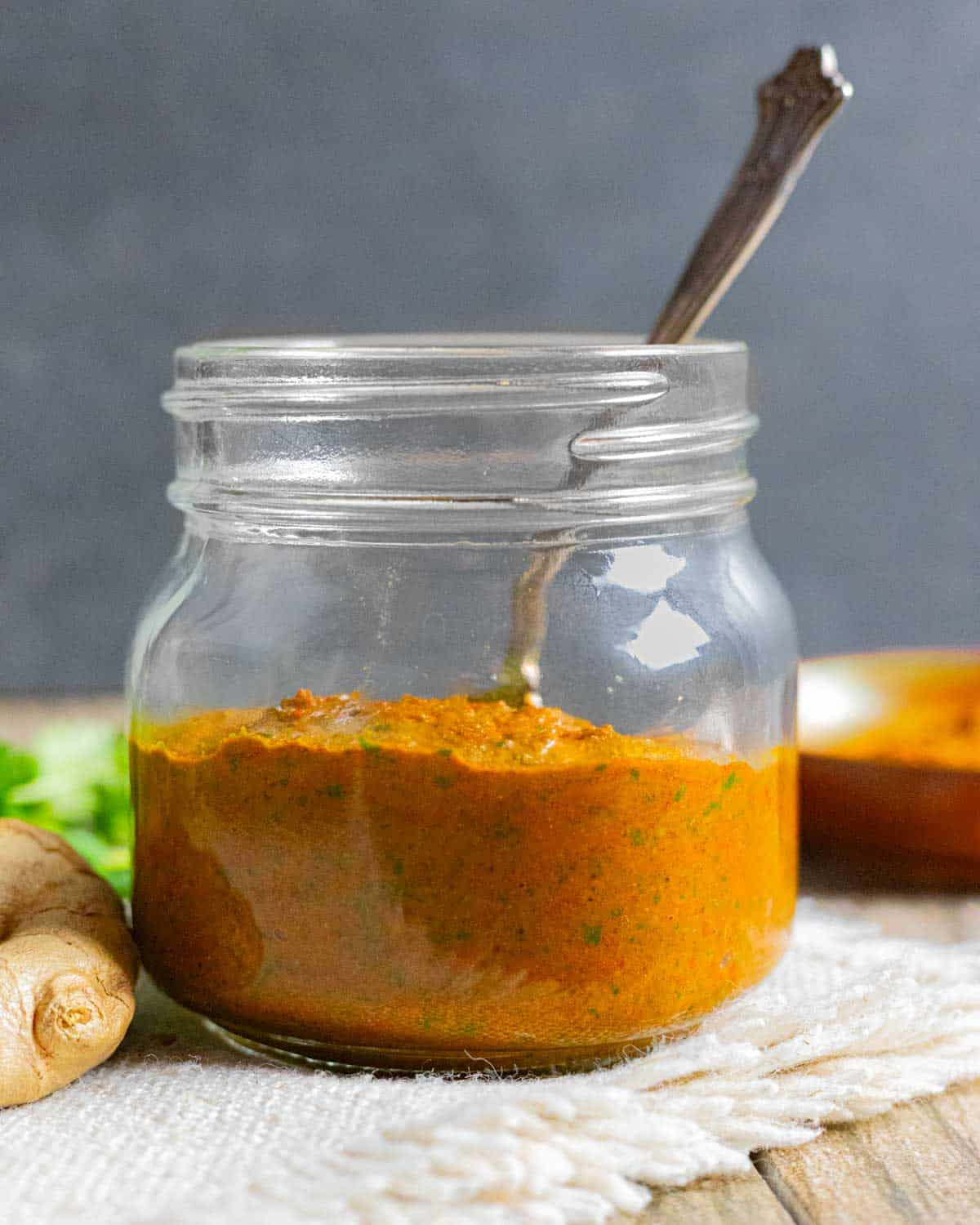
Jump to:
Make your own homemade tikka paste in just a few minutes. It’s a delicious staple to keep on hand for easy, everyday weeknight meals or any Indian fusion recipe that could use a lift from this complex blend of spices.
Nothing beats the aromatic splendor of these fragrant Indian spices and herbs. It can be used on Indian Tikka Spiced Salmon, as an ingredient in chicken, beef or lamb tikka and more. I include several ideas below, on how to use this wonderful masala paste. It truly takes ordinary meals to the next level.
What is tikka paste?
This is a curry paste that includes ground spices and herbs that are blended together. Tikka masala spices are combined with a mixture of ginger, tomatoes, cilantro and oil to create a perfect marinade or base for soups. It is most often combined with yogurt and used in Indian dishes to marinate meat, poultry, fish, tofu or paneer.
Why you’ll love this recipe
- It’s fast and easy – takes only about 10 minutes to put together and can be used right away
- Versatile – it’s a powerhouse ingredient to elevate weeknight dinners and other Indian curry recipes
- No unwanted ingredients – for instance, many store bought products contain ingredients such as flour or artificial coloring
- FODMAP-friendly – made with low-FODMAP spices and ingredients – perfect for low-FODMAP Indian recipes
- Low-carb and keto spices – this uses all keto seasonings, is sugar-free and adds nuanced flavors to your favorite keto Indian food. Because, keto tikka masala is just so, so good.
- Vegetarian and vegan-friendly – use this for any vegan or vegetarian low-FODMAP recipe

Ingredients
- Tikka masala spice powder – use Homemade Tikka Masala Powder or your favorite pre-made spice blend
- Green onions or garlic – for a no garlic no onion recipe, use only the green part of the green onion and omit the garlic. Chop into 1-2 inch pieces for better blending. If you don’t follow a low-FODMAP diet, feel free to include the garlic.
- Fresh ginger – if you don’t have fresh, you can use powdered ginger or ginger paste. Peel and coarsely chop for better blending.
- Tomato puree – or use tomato paste or passata. If using tomato paste, you will need to add a little bit of water to thin it out.
- Fresh cilantro – using fresh is key. Remove the large stems.
- Olive or avocado oil – or use any neutral oil, such as sunflower
- Salt – I highly recommend kala namak black salt for an incredible umami flavor. This salt is used in many Indian dishes and you can read more about it in this Kala Namak Ingredient Spotlight. You can also use regualr sea salt, instead.
- Asafoetida – optional. A great garlic substitute used often in Indian cuisine. Read more about it in this Asafoetida Ingredient Spotlight.
- Water - as needed for consistency
Olive oil vs avocado oil
I recommend using avocado oil or sunflower oil over olive oil for this recipe. Olive oil can develop a bitter flavor when blended at high speeds. Avocado and sunflower oils hold up much better to blending.
Instructions
The best way to make this is in a blender or food processor. I really like to use a Nutribullet.
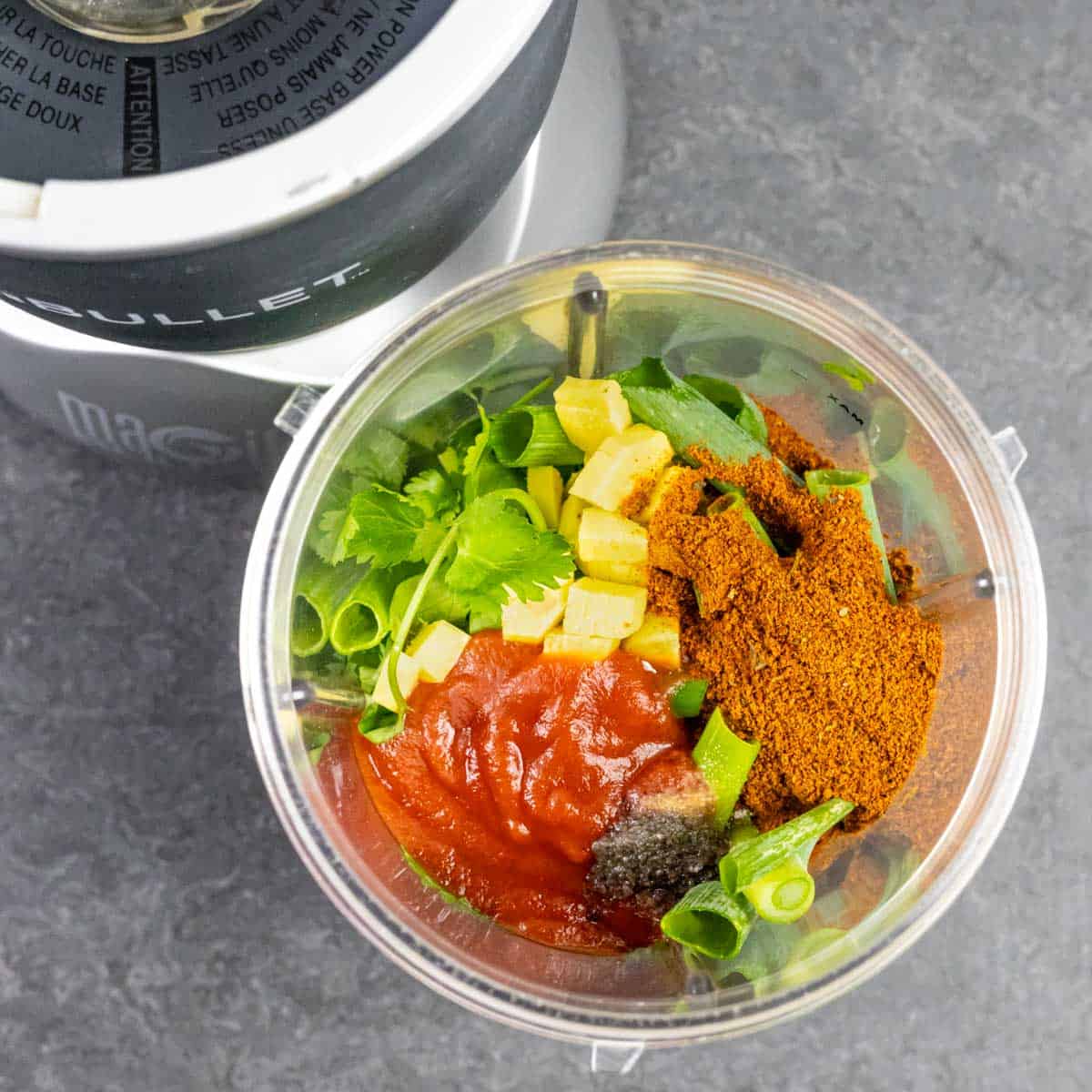
- Place all ingredients in a blender or food processor
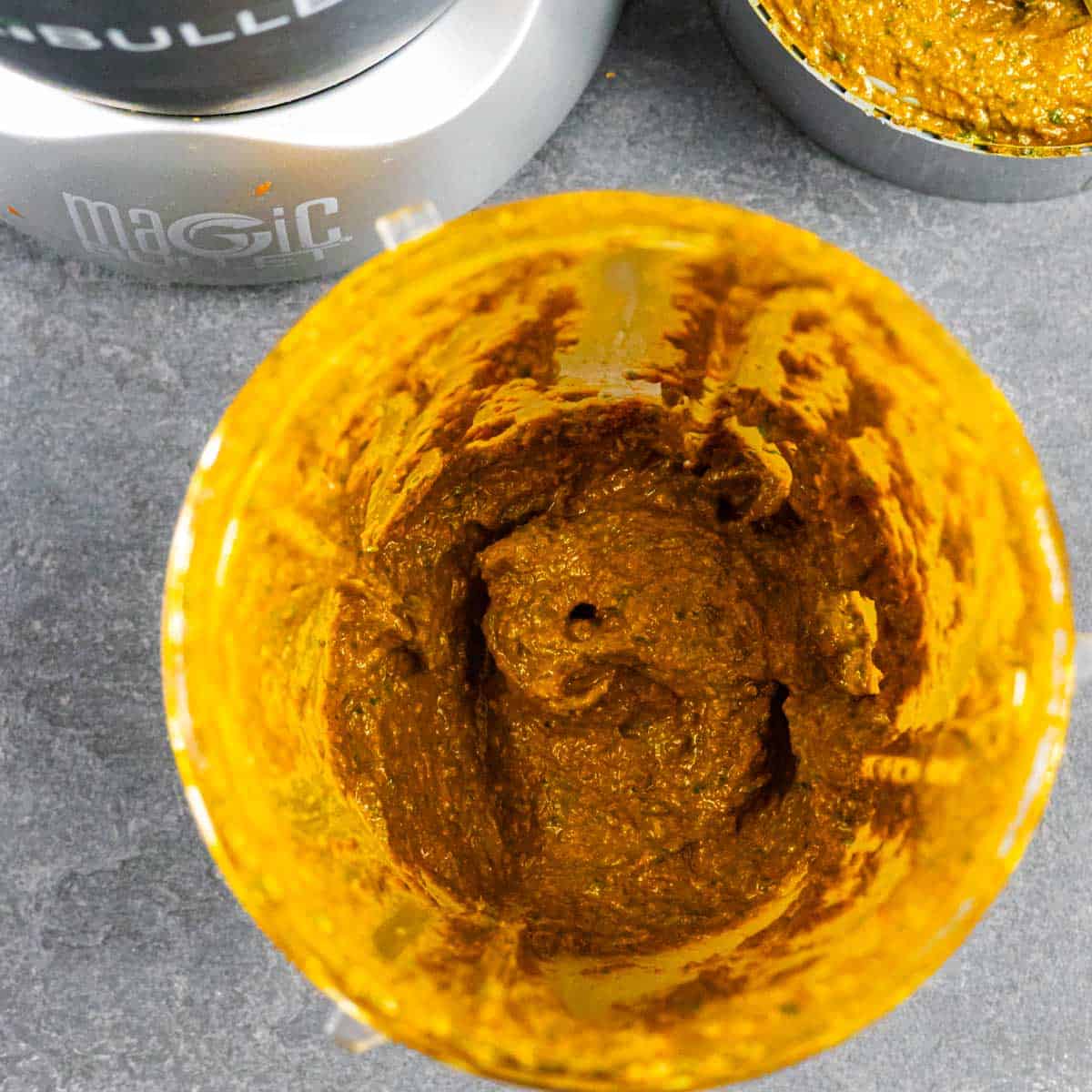
- Puree until smooth. You may find you need to scrape down the sides and blend again to fully incorporate all of the ingredients.
TIP: For a thinner consistency, add some water or other liquid ingredients as suggested in the Variations section. Without adding a little water, the mixture may be too thick to blend evenly. Be sure to only add more liquid 2 teaspoons at a time to ensure it doesn’t become too thin. See the FAQ if it does get too thinned out.

How to use
There are so many uses for this amazing ingredient. Here are some of my favorites:
- Marinade – combine 2-3 tablespoons with ¼ - ½ cup of yogurt or sour cream and use as a marinade for traditional tikka recipes. Or, just use on its own for a dairy-free tikka masala.
- Use as a sauce – top meat, fish, poultry and pan fry, bake or air fry. Spread some on tilapia with a sprinkle of salt and pan-fry in olive oil or ghee. It's a take on fish tikka that will blow your mind.
- Mix with vegetables – toss with raw veggies before roasting, or add a dollop to Homemade Cauliflower Rice
- Soups and stews – add a tablespoon or two to soups and stews. It’s amazing when added to beef stew, tomato or butternut squash soup. Try some in chicken soup. Chicken tikka masala soup is just divine.
- Add to mayonnaise – create an astounding mayo for sandwiches, burgers, chicken salad and more
- Burgers – mix into ground meat for the best burgers ever
- Simmer sauce – add to coconut milk, homemade bone broth or additional tomato puree for an unreal simmer sauce
Variations
Use these ingredients to adjust to your taste or customize for your favorite dish.
- Tamarind paste – adds a sweet, tangy flavor
- Amchur powder (dry mango powder) – is often used in tikka masala recipes. It adds a fruity, sour flavor. Use orange peel, tamarind paste or tamarind powder as an amchur powder substitute.
- Mint – add a tablespoon of fresh mint for extra sweetness and brightness
- Lemon juice, lime juice or red wine vinegar – add a teaspoon for acidity
- Spicy – add cayenne, Aleppo pepper, red pepper flakes or Kashmiri pepper powder. Adding additional Kashmiri pepper creates a darker red color, extra heat and phenomenal flavor.
How to store
Store in the refrigerator for up to 3 weeks or consider freezing.
FAQ
Yes. The best way to freeze is in ice cube trays. Once frozen, transfer to a sealable freezer bag and freeze for up to 6 months.
Yes. There are several products typically available at your local supermarket and online, such as Patak’s Tikka Masala Curry Spice Paste. However, most products contain garlic, onion, corn flour and sugar.
If you find that the mixture is too thin, add xanthan gum, additional Kashmiri chili or spice mix a pinch at a time until it reaches your desired consistency. Learn more about xanthan gum in this Xanthan Gum Ingredient Spotlight.
Tomato puree is slightly thinner than tomato paste, but thicker than tomato sauce. While tomato puree is the preferred ingredient, you can also use tomato paste. However, you will need to add a small amount of water to the mixture for the correct consistency. If you only have tomato sauce, it can be used interchangeably for puree in this recipe.
Did you make this recipe? Let me know how you liked it by giving a star rating and leaving a comment!
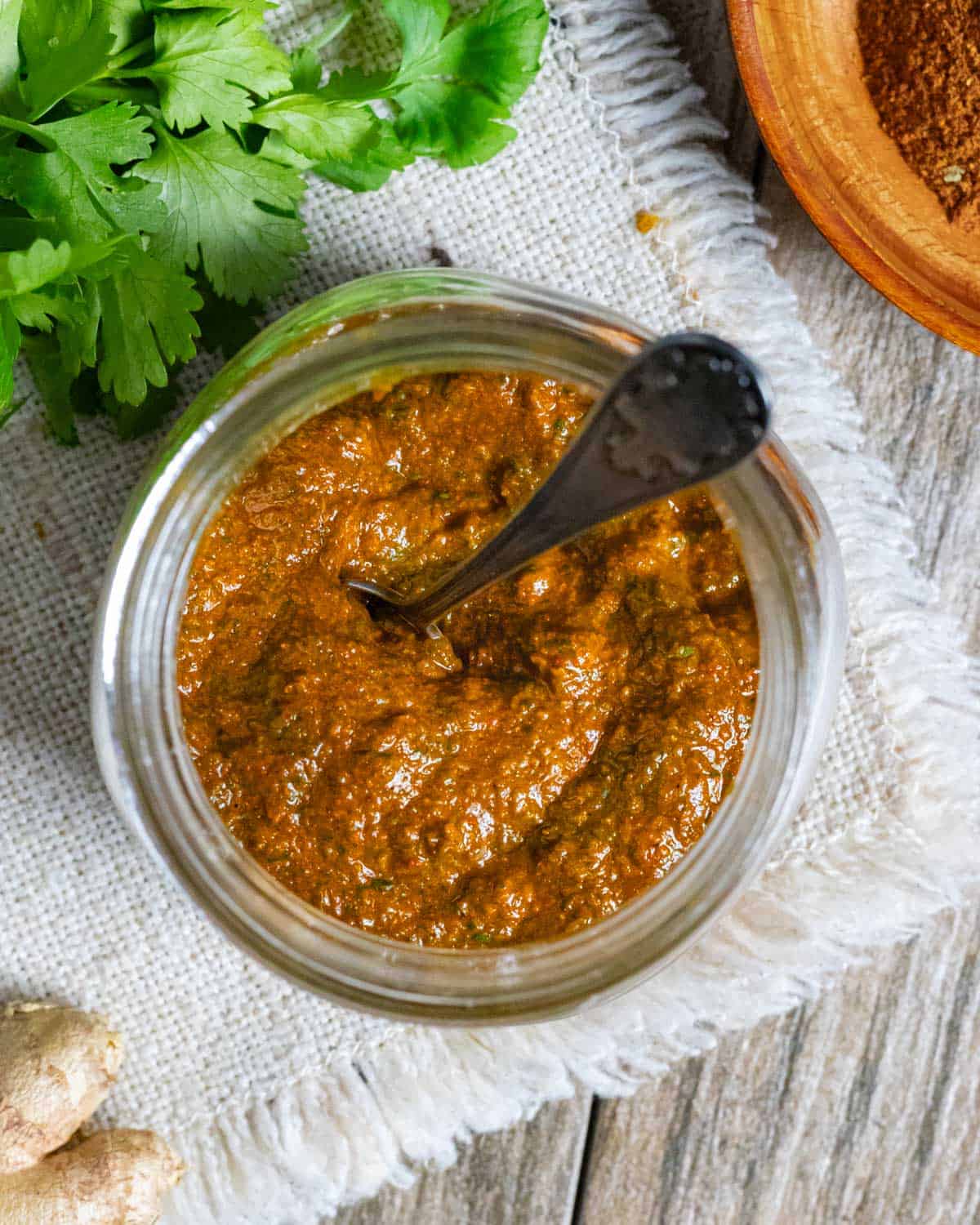
Other ingredient spotlights you might like
📖 Recipe
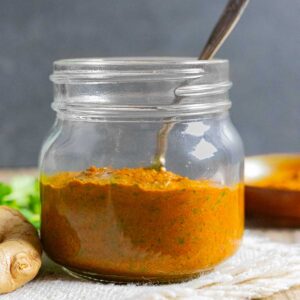
Tikka Masala Paste Recipe
Ingredients
- 3 tablespoons homemade tikka masala powder (or your favorite tikka masala brand)
- 2 green onions (green part only for low-FODMAP. Chop into 1-2 inch pieces for better blending.)
- 2 cloves garlic (omit for low-FODMAP)
- 1 inch fresh ginger root (peeled and coarsely chopped)
- 3 tablespoons avocado oil (olive oil or any neutral oil)
- ½ teaspoon salt (kala namak black salt is best. Read more in this Kala Namak Ingredient Spotlight.)
- ¼ cup tomato puree (see Notes for alternatives)
- 1 cup fresh cilantro (large stems removed)
- 1 pinch asafoetida powder (optional. Read more in the Asafoetida Ingredient Spotlight.)
- water (or other liquid as needed for consistency - see Notes)
Instructions
- Place all ingredients into a blender or food processor (I love my Nutribullet) and blend until smooth. You may find you need to scrape down the sides and blend again to fully incorporate all of the ingredients.
Notes
Tomato puree substitutes
You can use tomato sauce, passata or tomato paste. If using tomato paste, you'll need to add a little bit of water to thin the consistency for blending.Variations
Use these ingredients to adjust to your taste or customize for your favorite dish.- Tamarind paste – adds a sweet, tangy flavor
- Amchur powder (dry mango powder) – is often used in tikka masala recipes. It adds a fruity, sour flavor. Use orange peel or tamarind paste or tamarind powder as an amchur powder substitute.
- Mint – add a tablespoon of fresh mint for extra sweetness and brightness
- Lemon juice, lime juice or red wine vinegar – add a teaspoon for acidity
- Spicy – add cayenne, Aleppo pepper, red pepper flakes or Kashmiri pepper powder. Adding additional Kashmiri pepper creates a darker red color, extra heat and phenomenal flavor.
How to store
Store in the refrigerator for up to 3 weeks or consider freezing.Nutrition
*Net carbs = carbohydrates - fiber
Nutritional information is an estimate, calculated using online tools and does not include optional ingredients unless otherwise indicated.

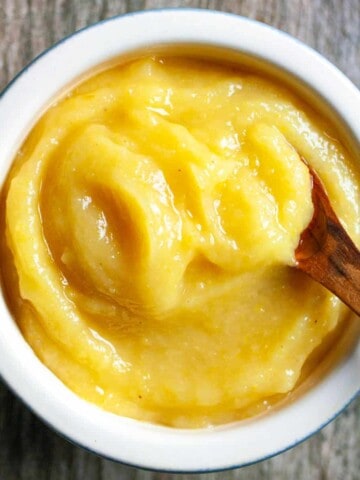
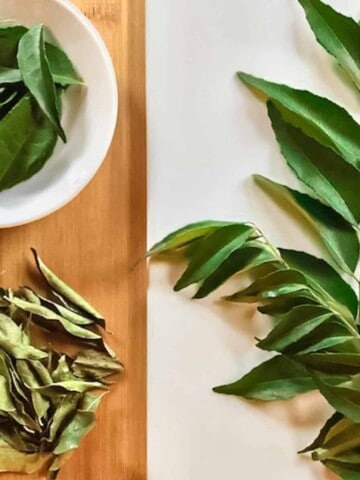
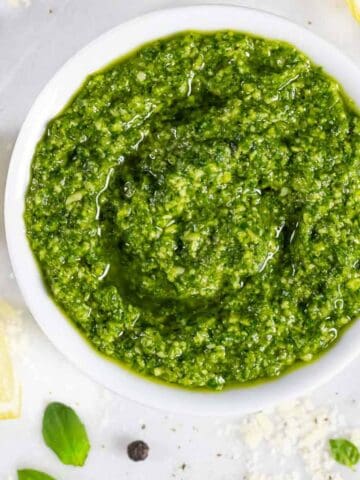
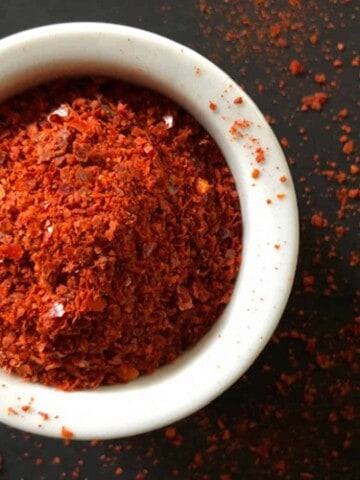
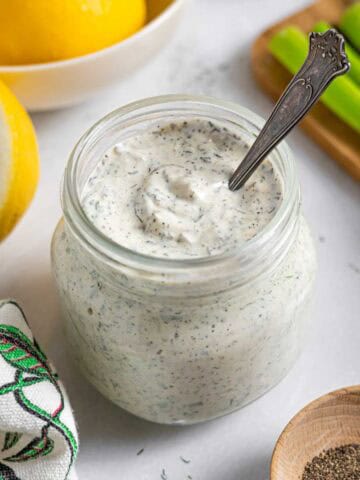
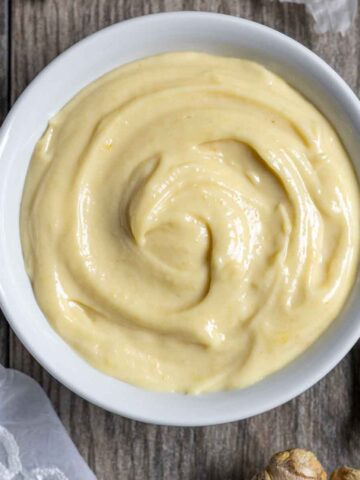

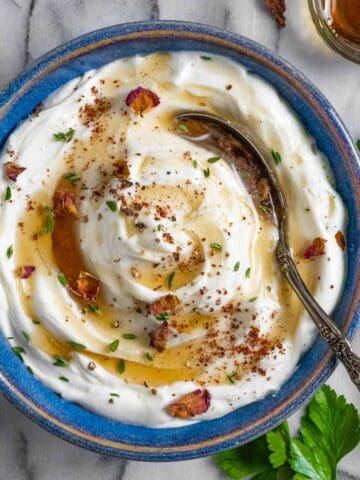
Comments
No Comments